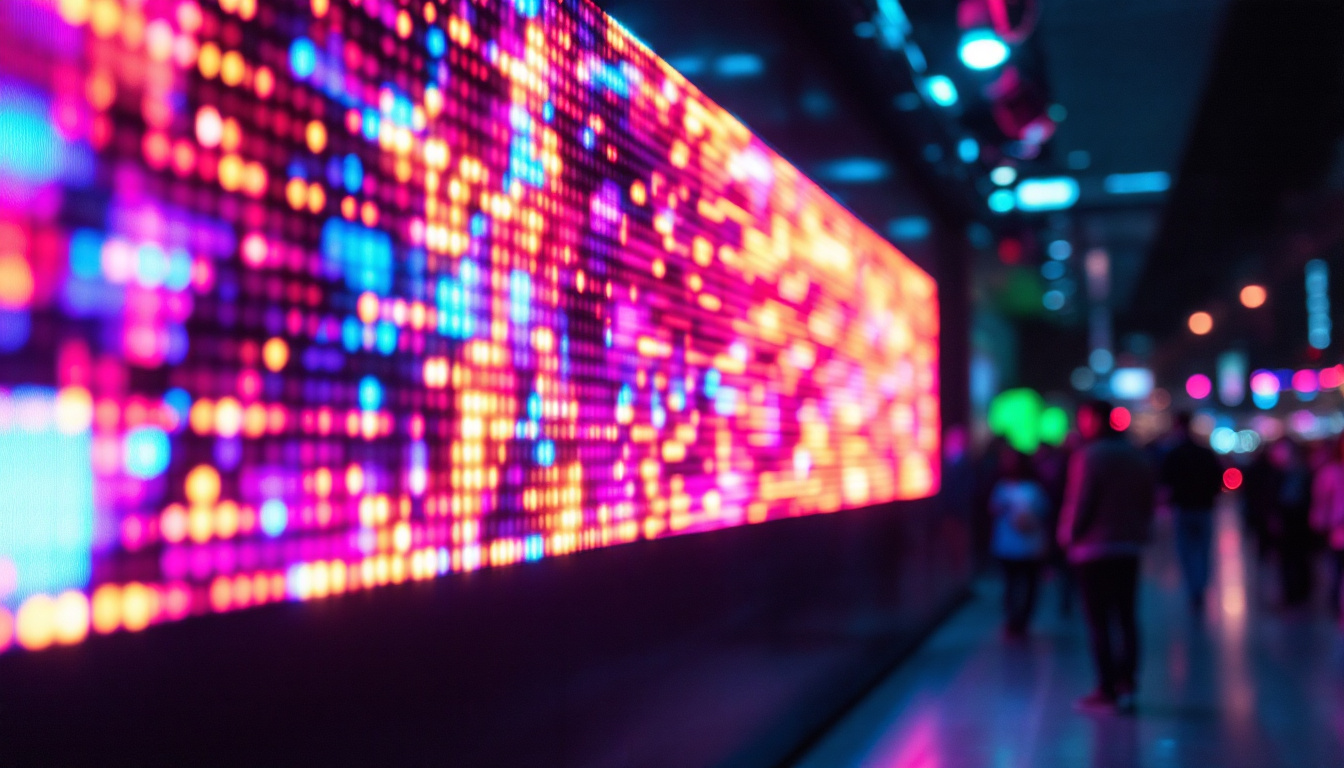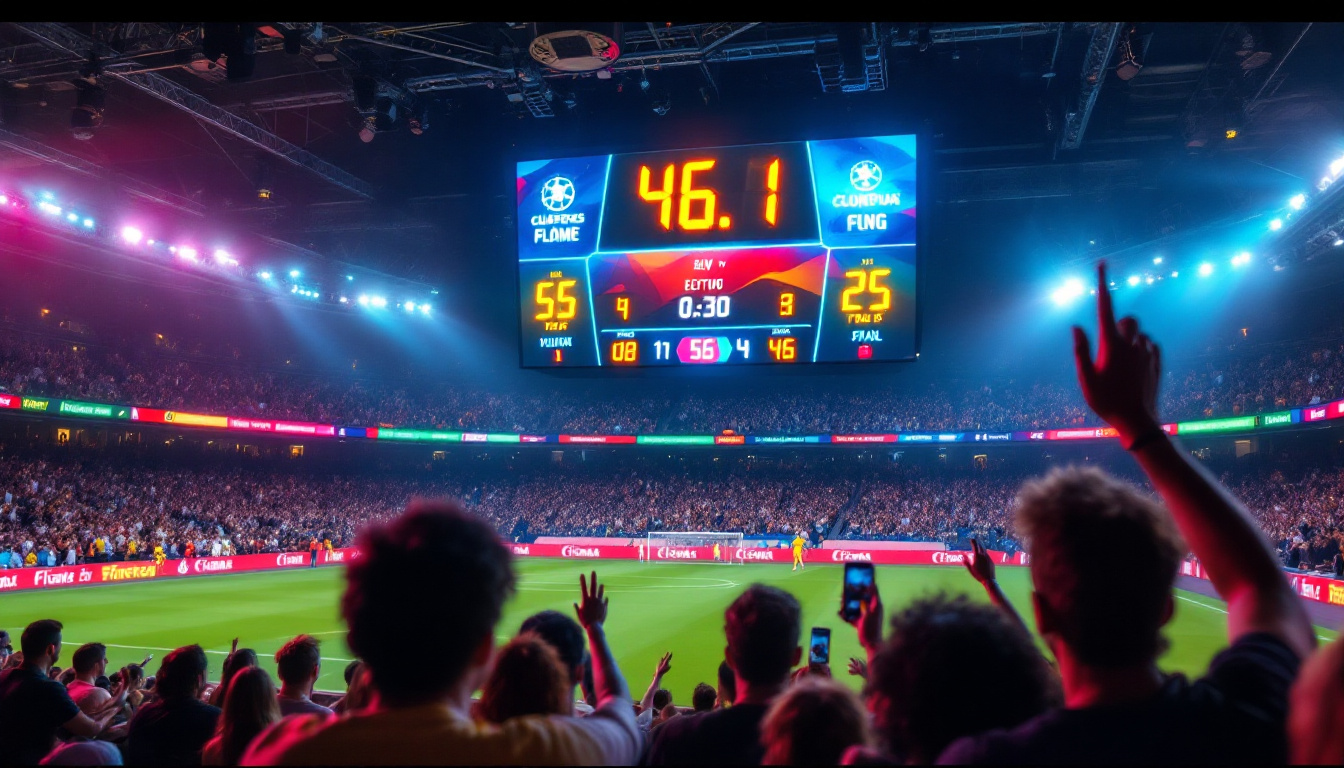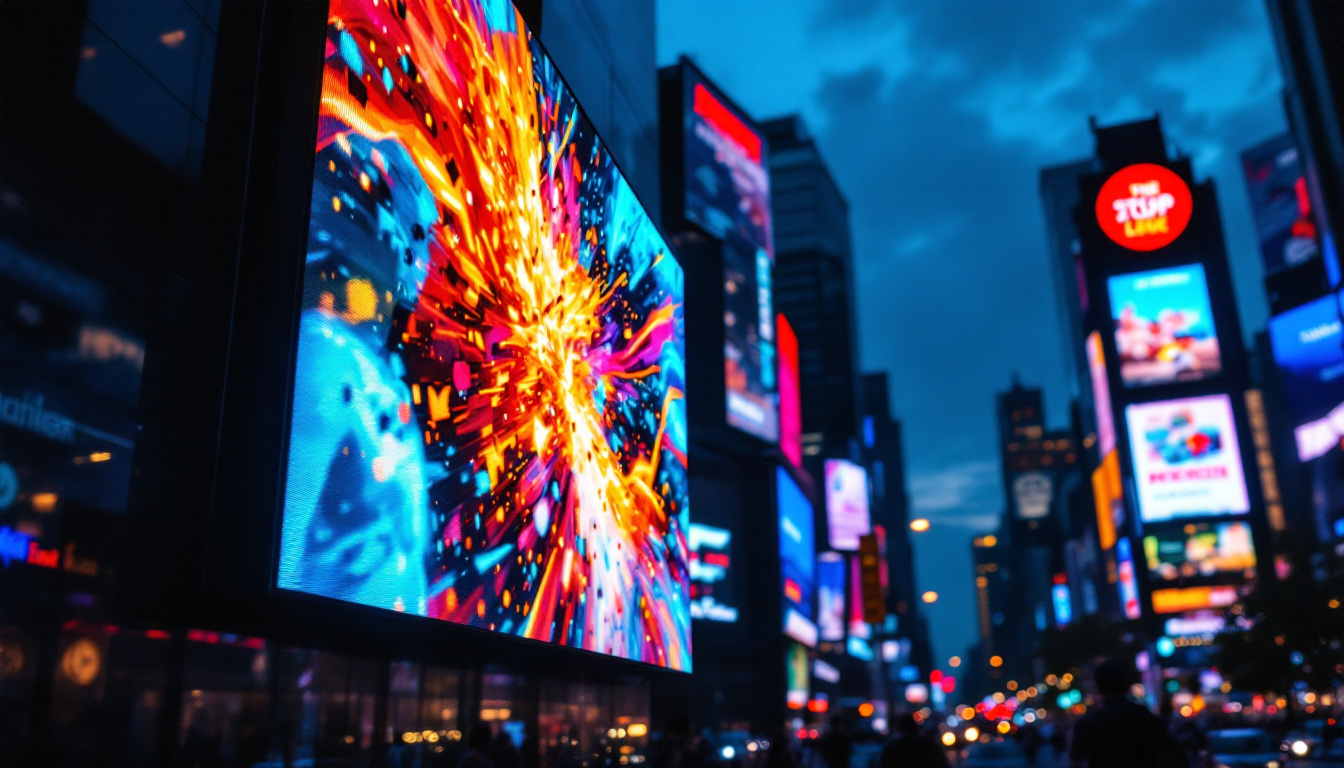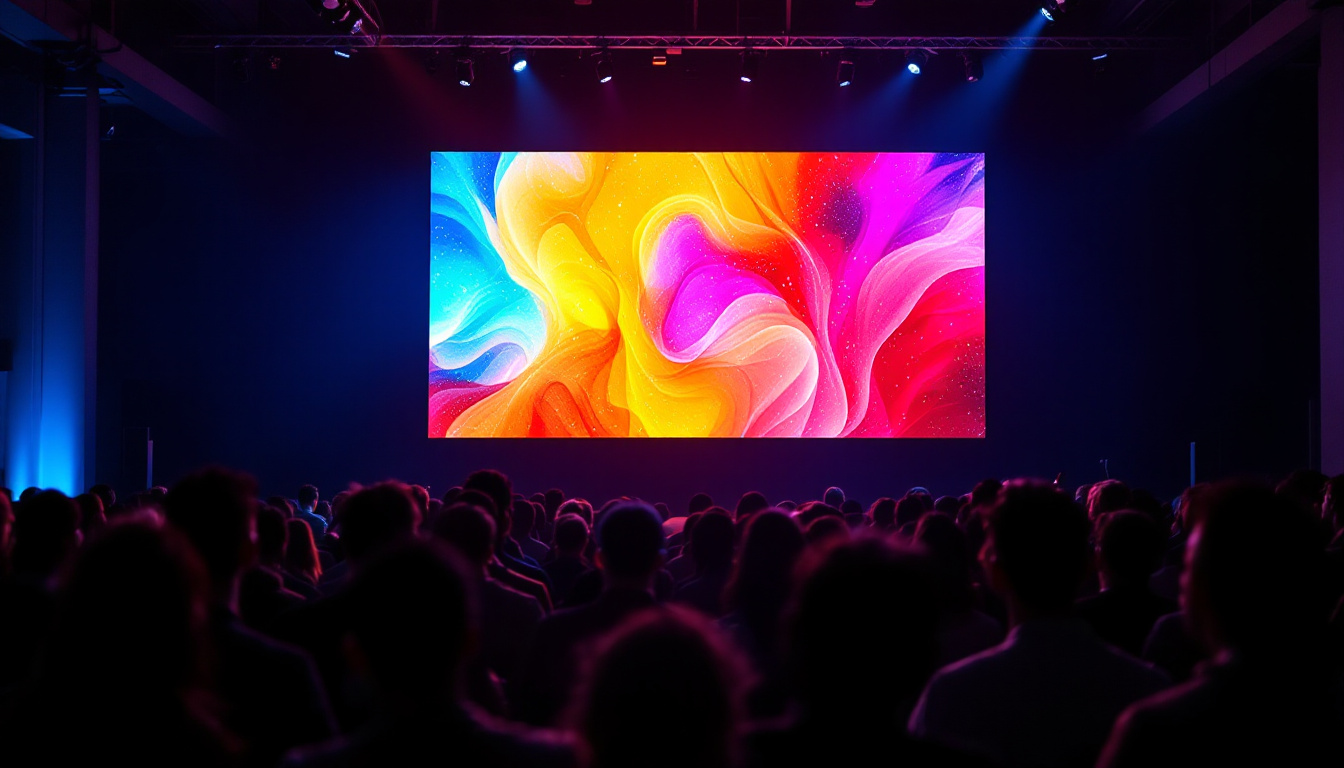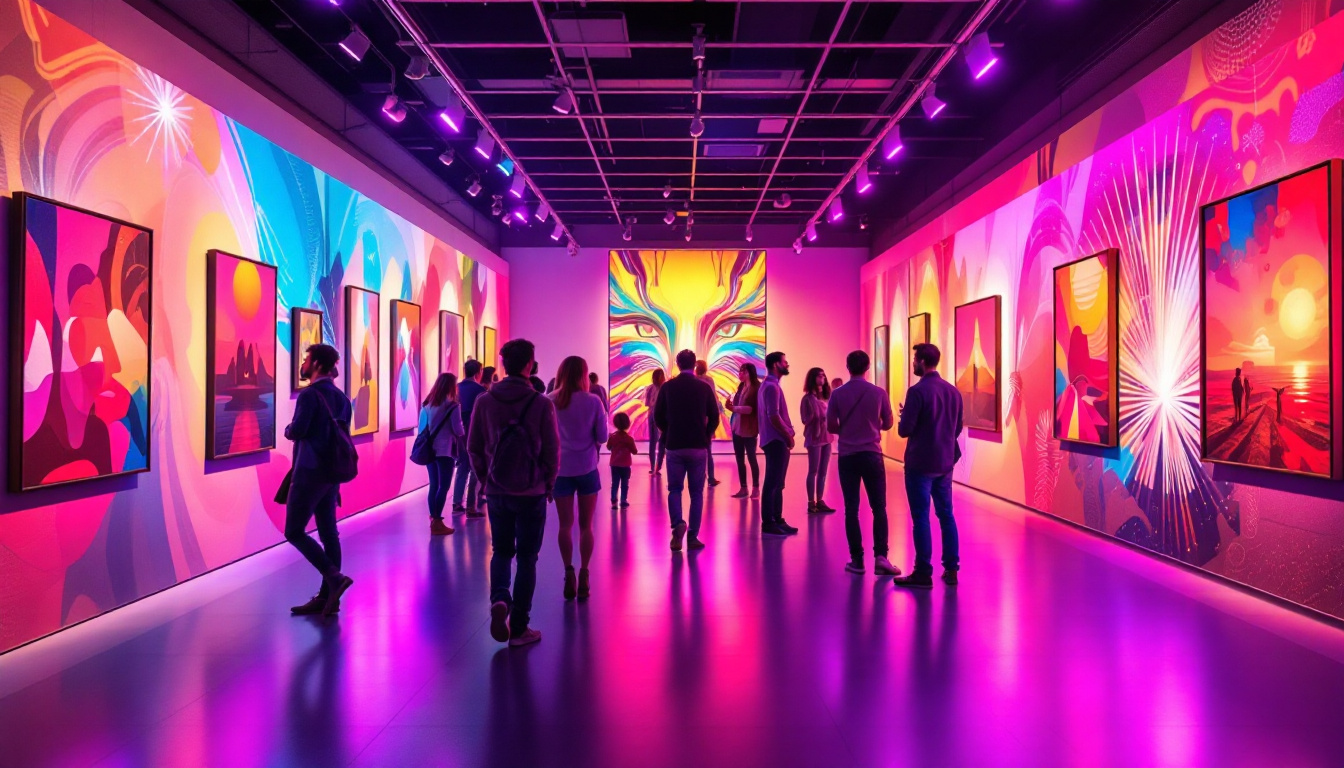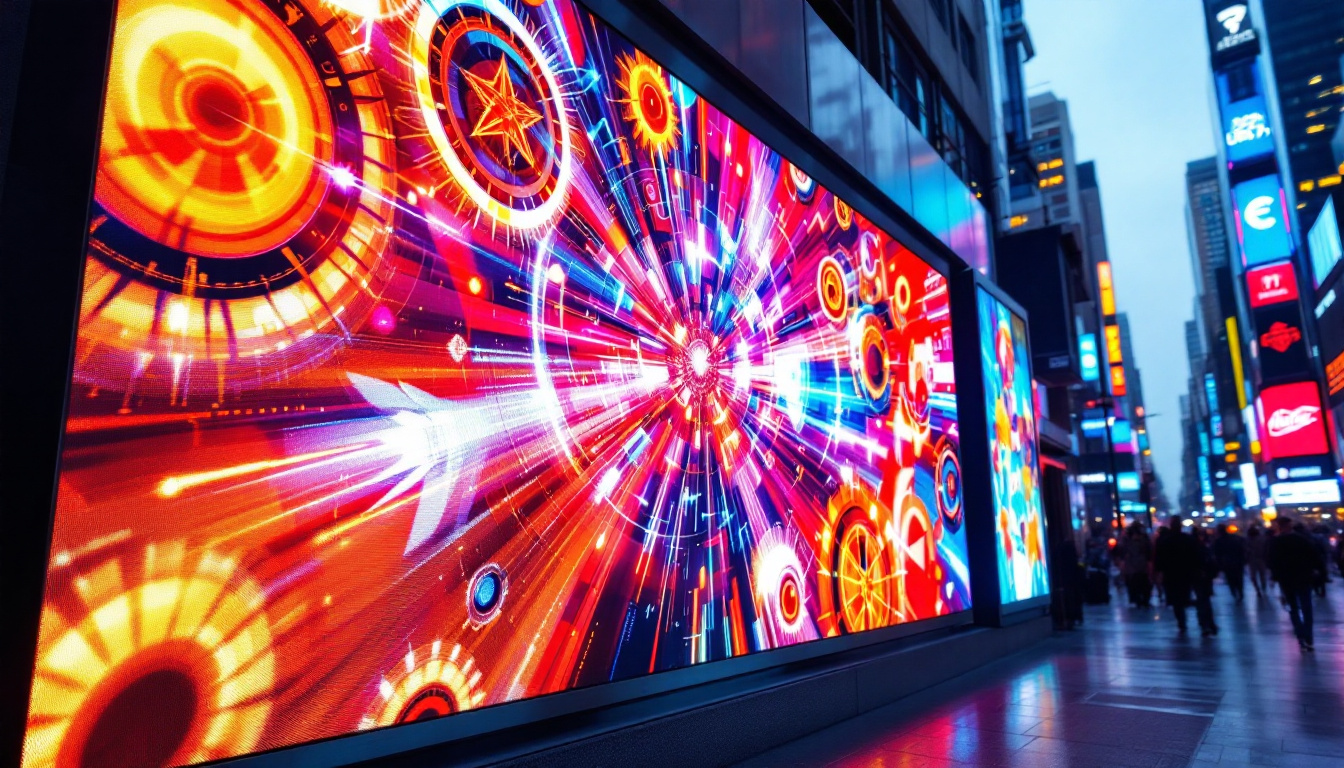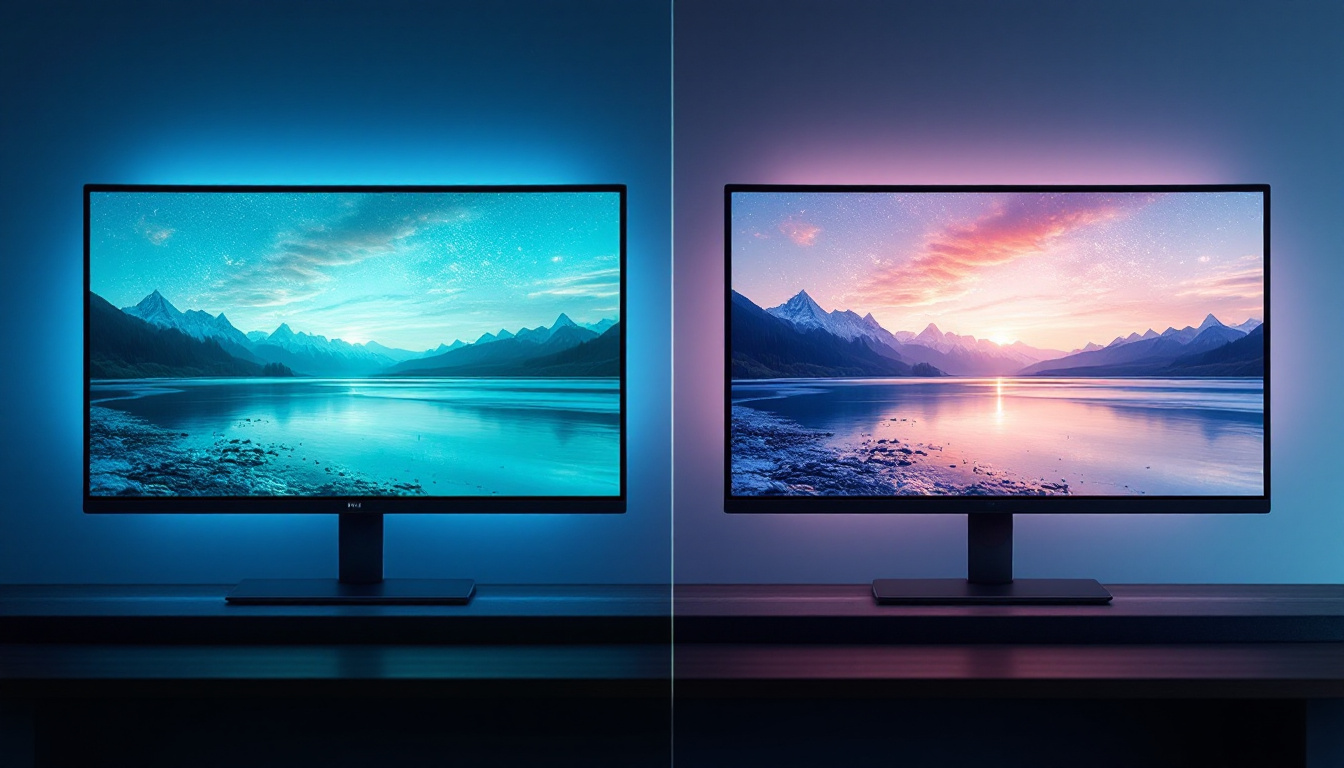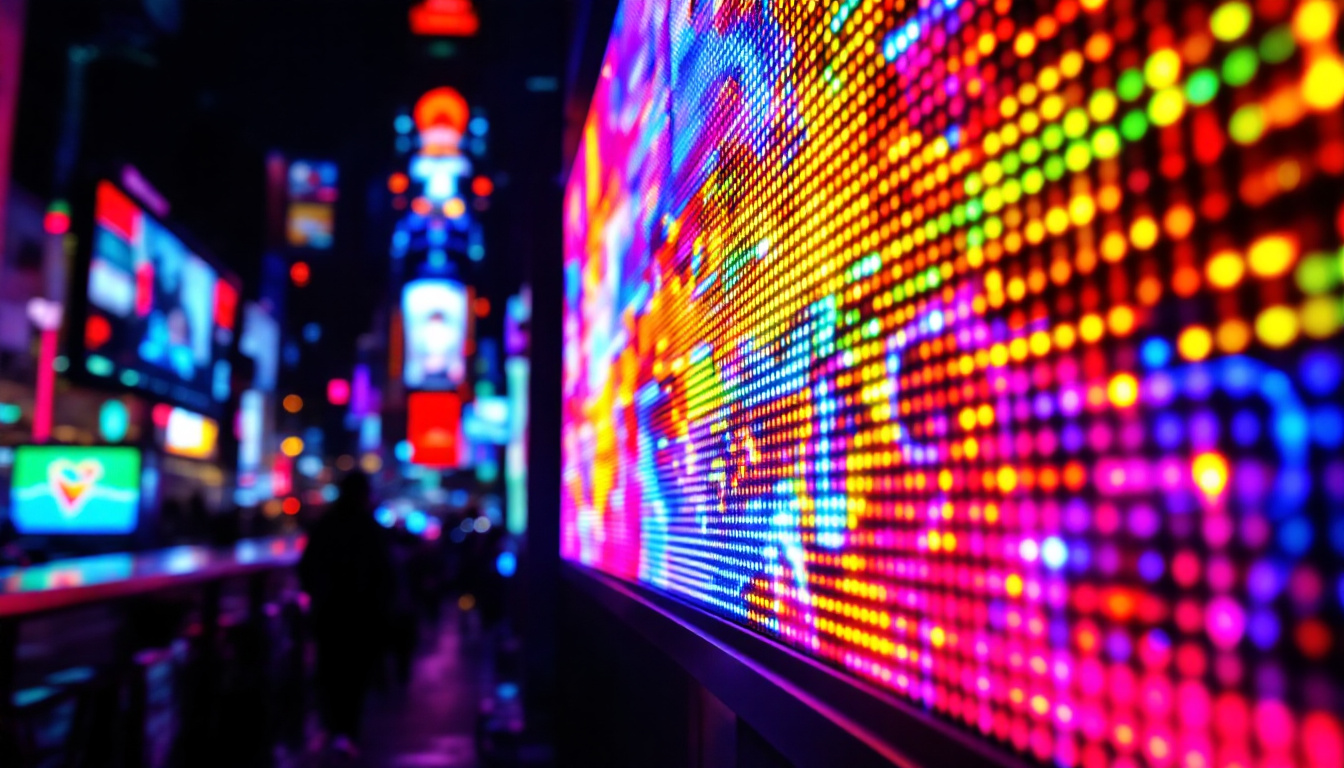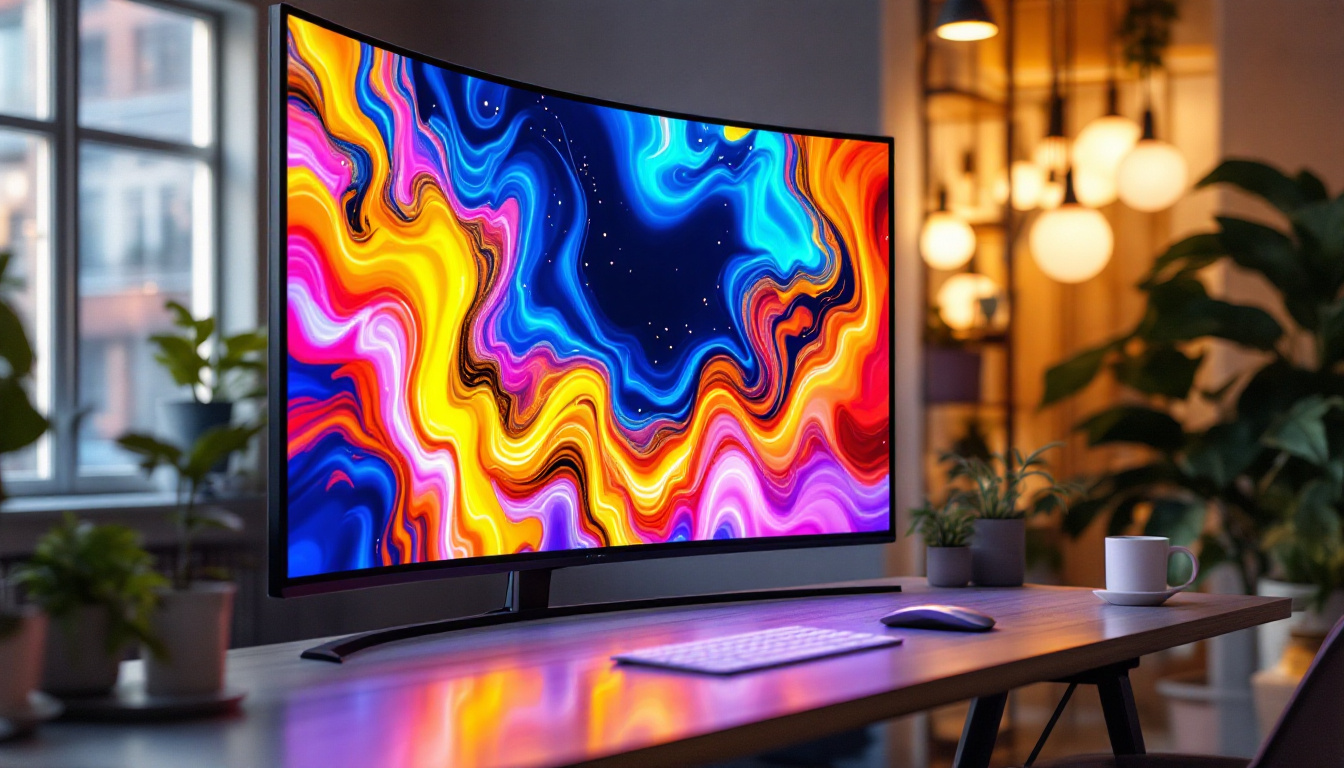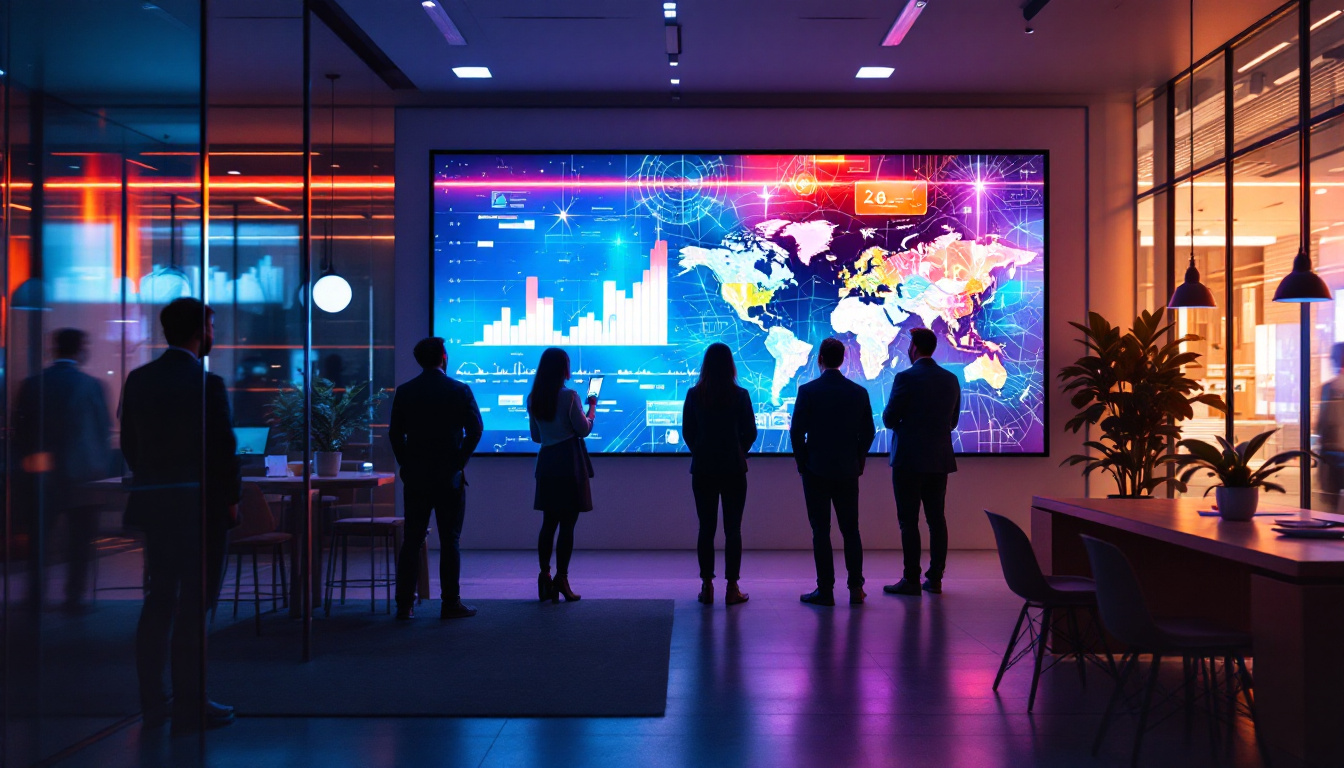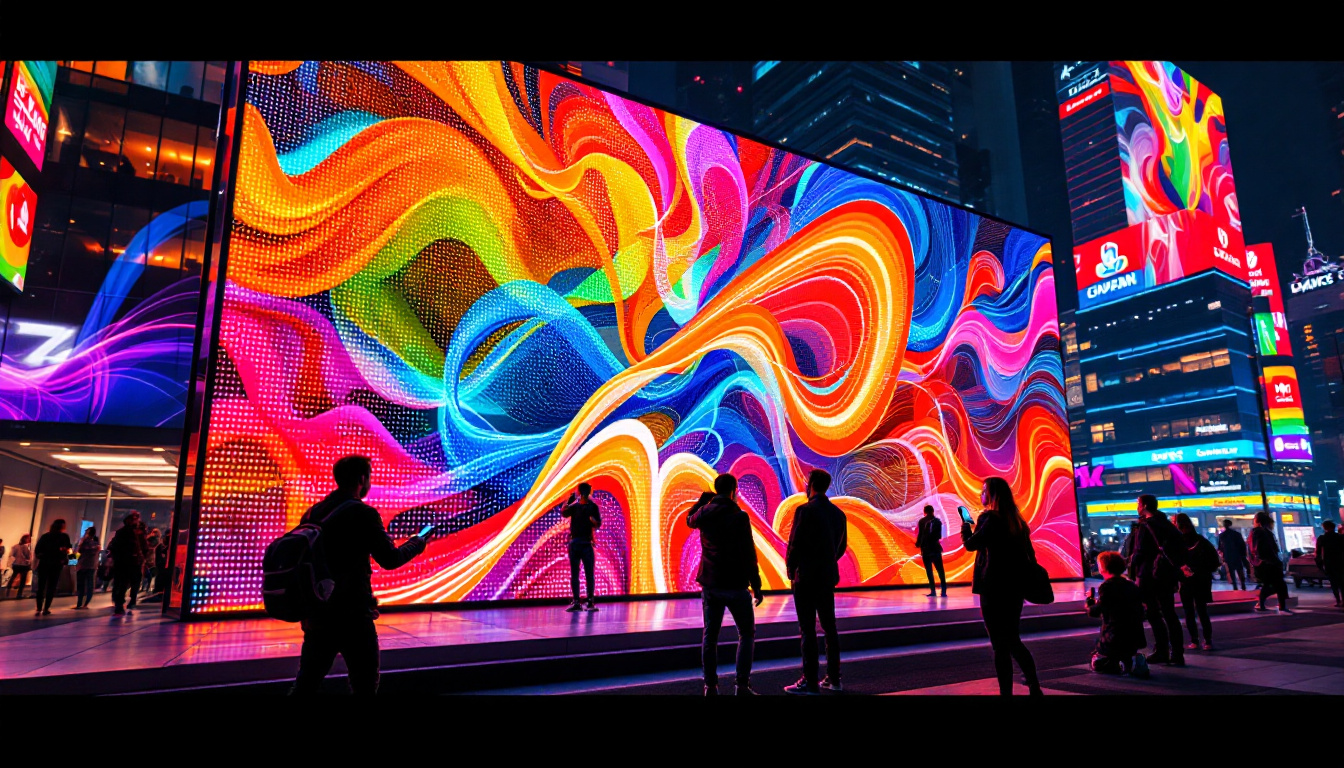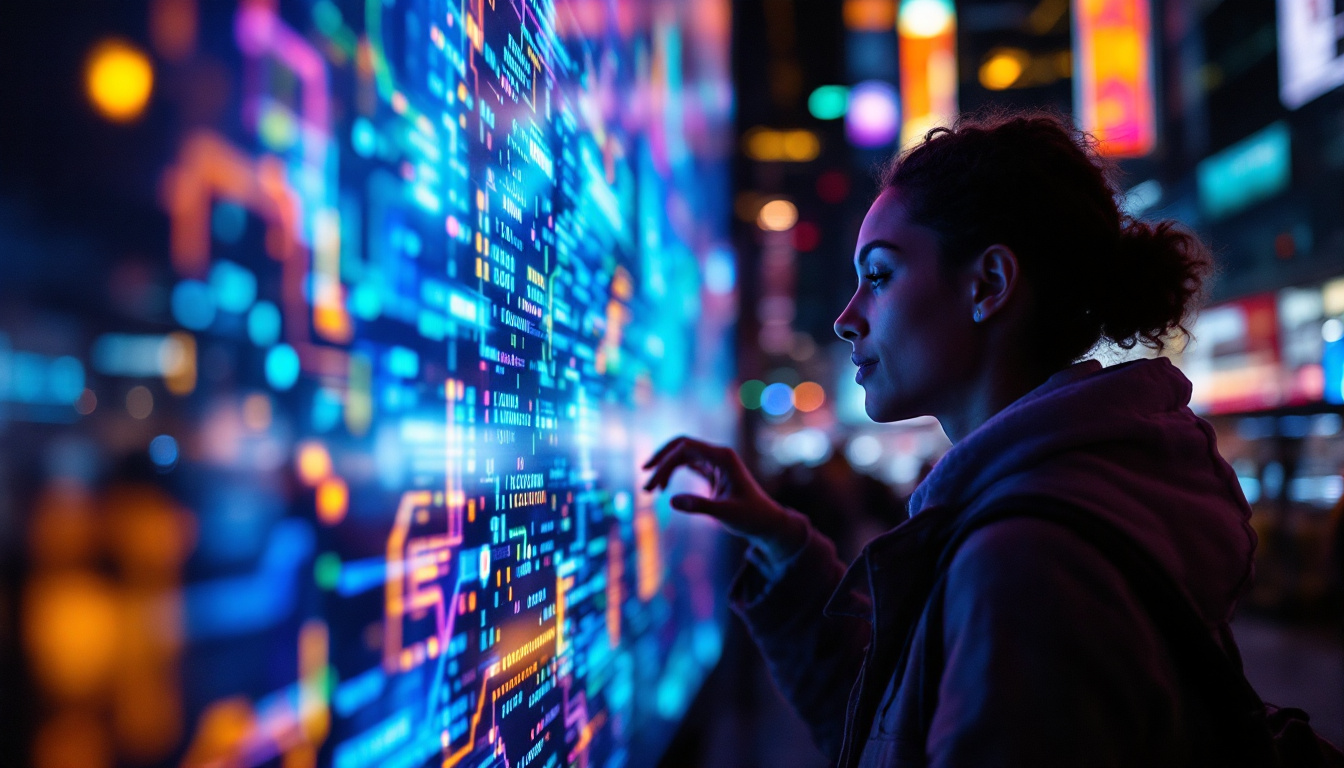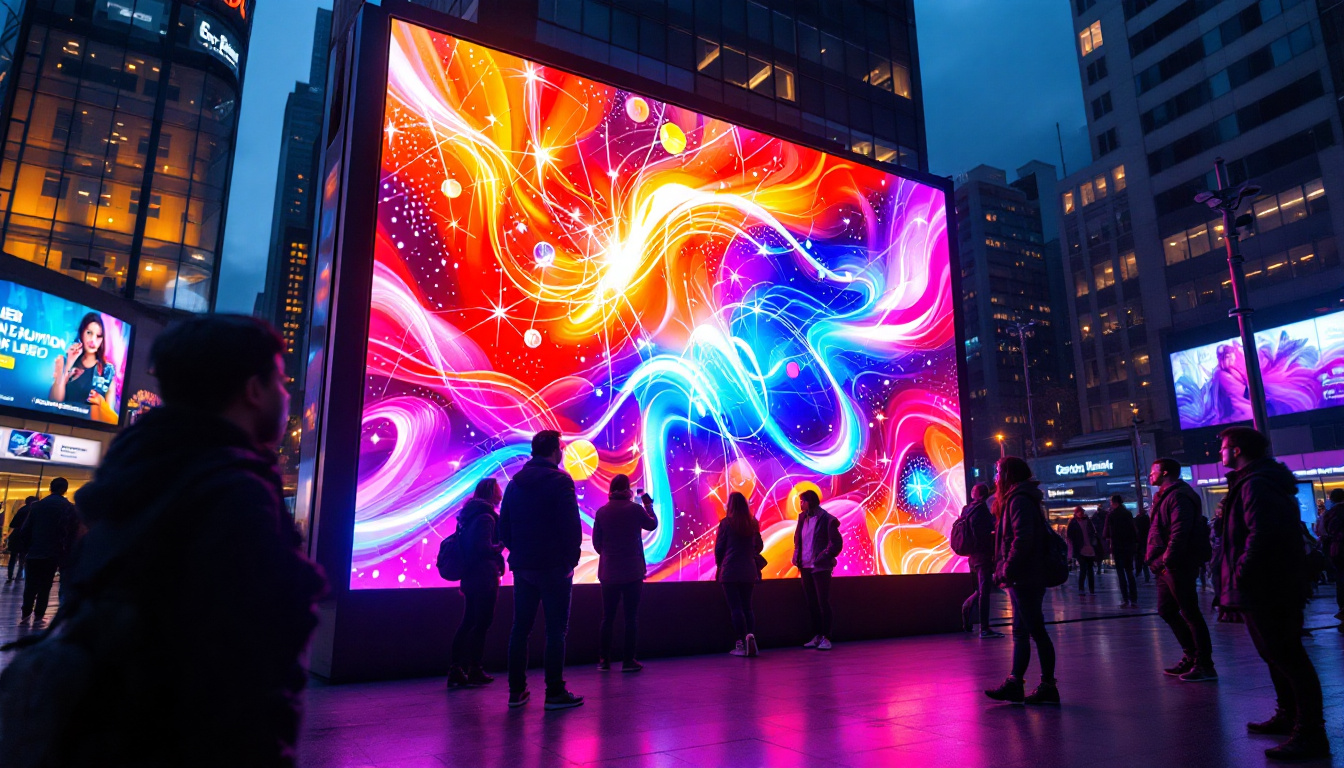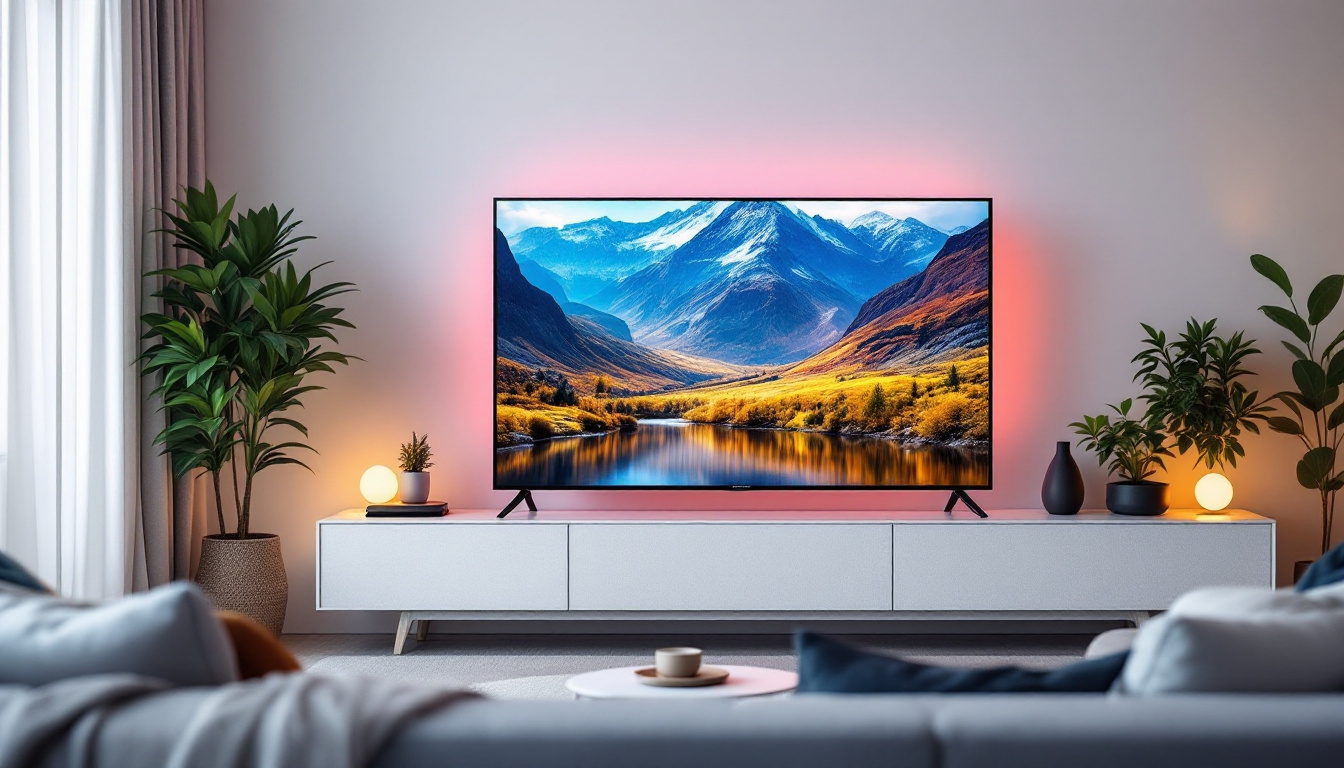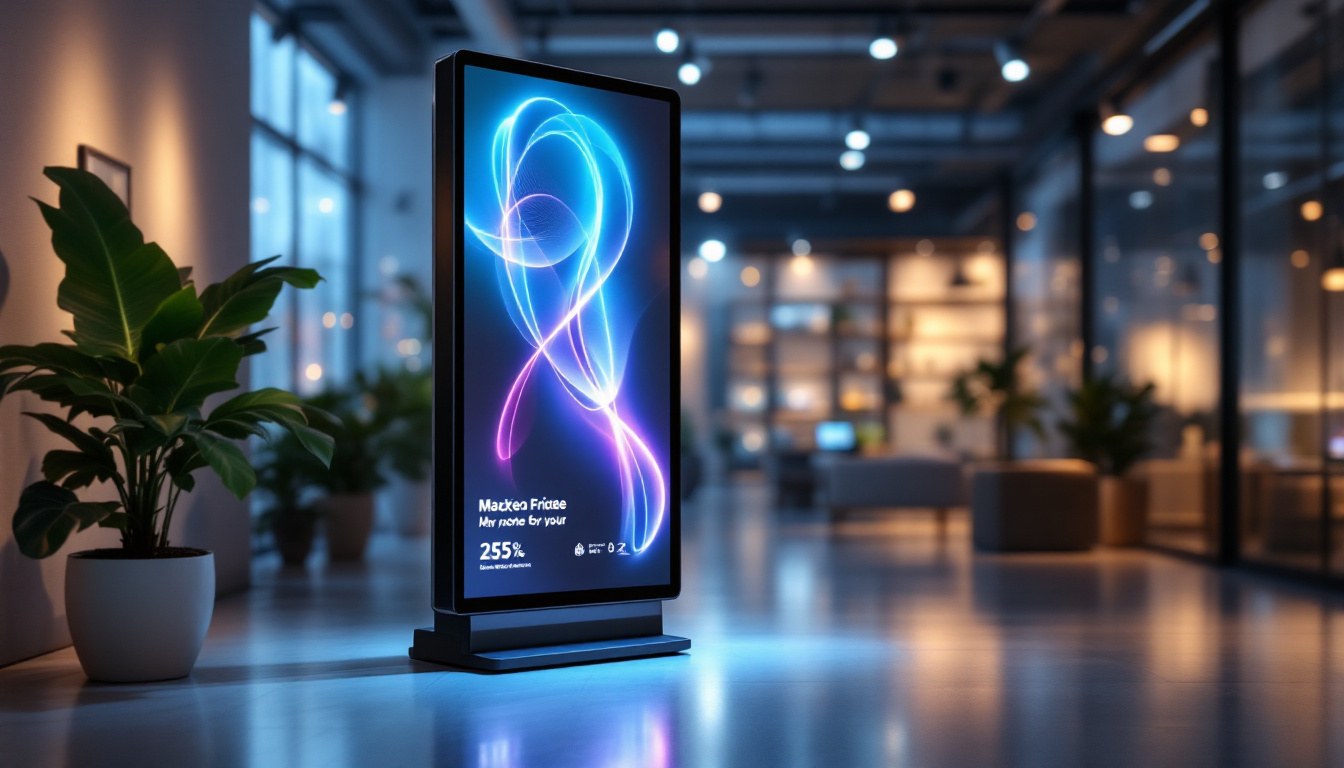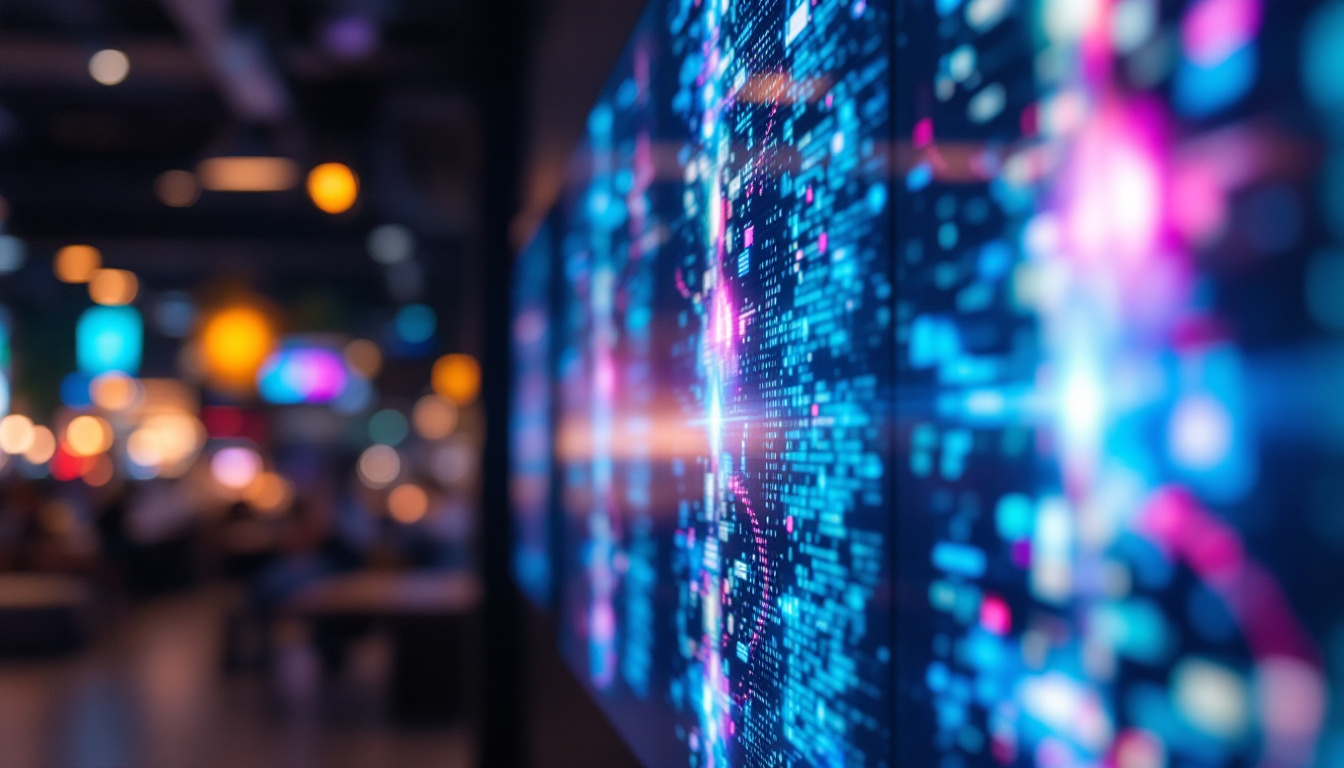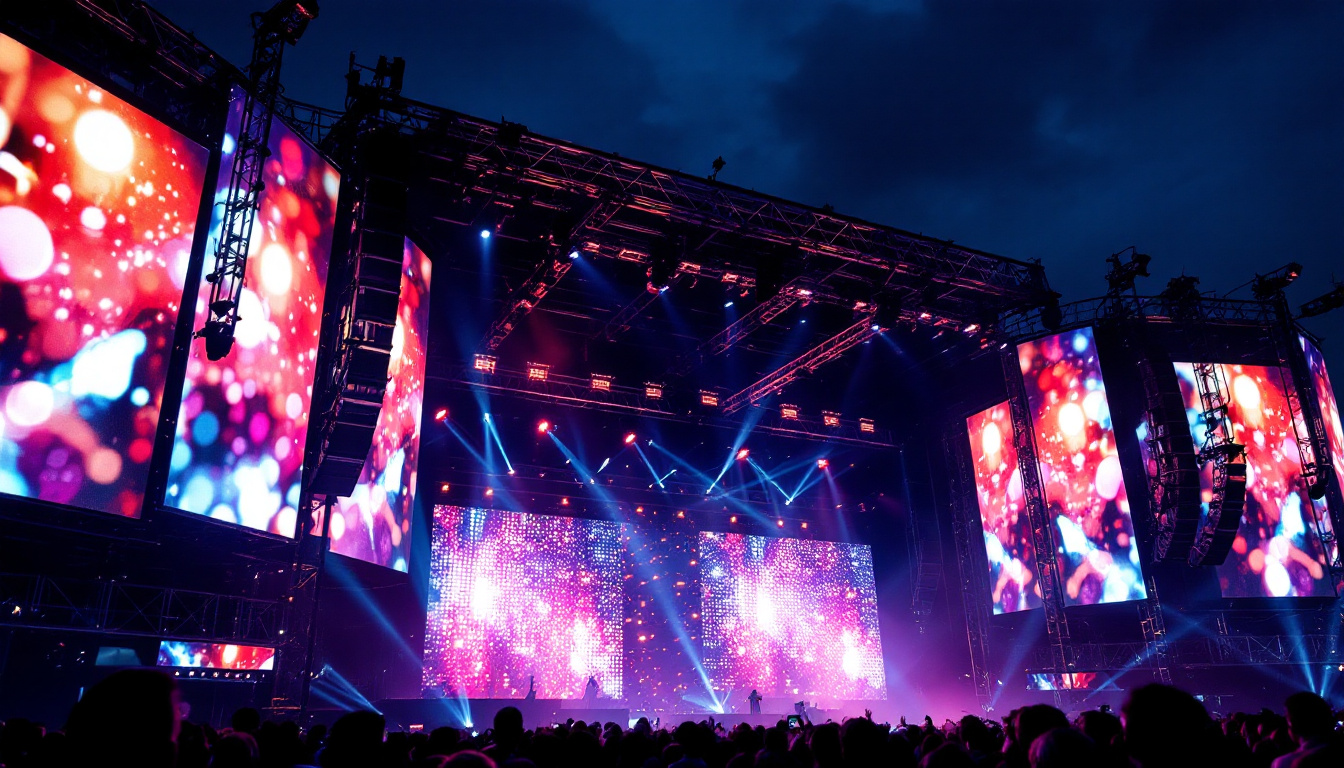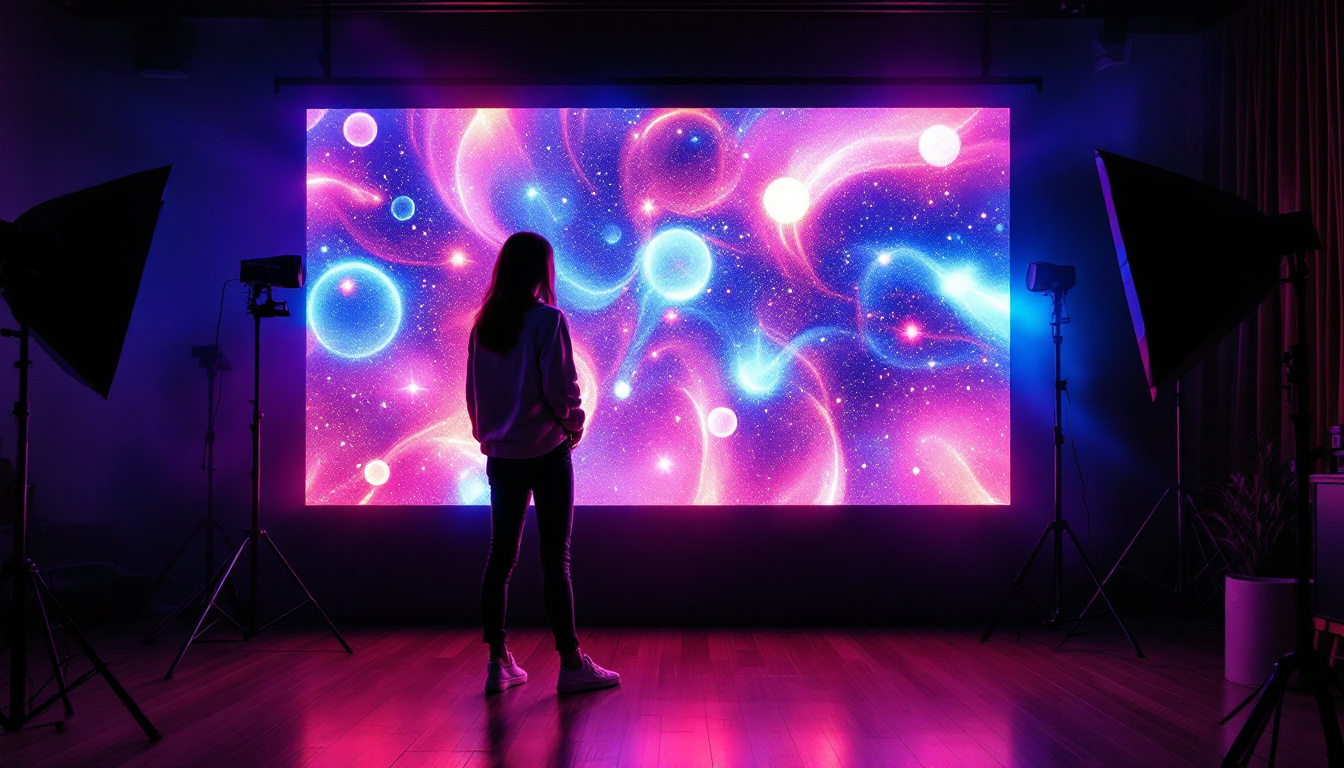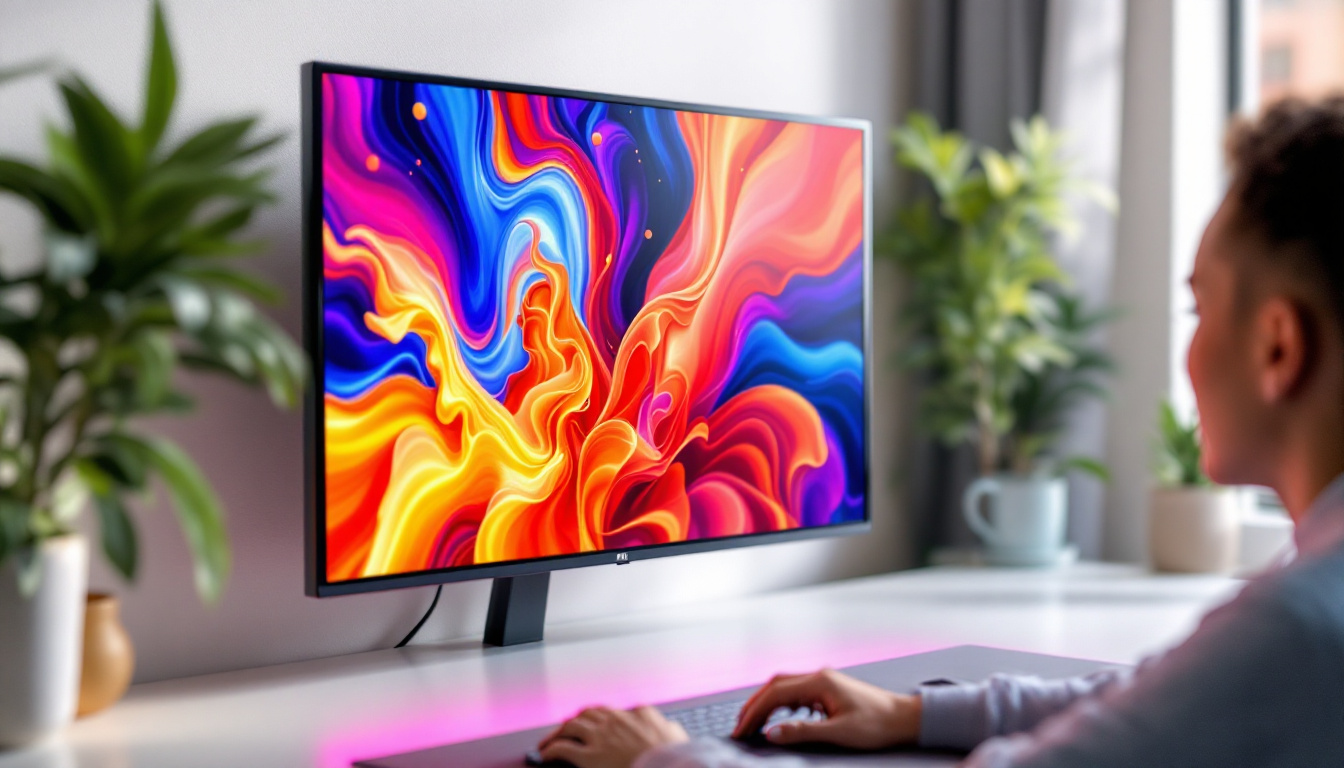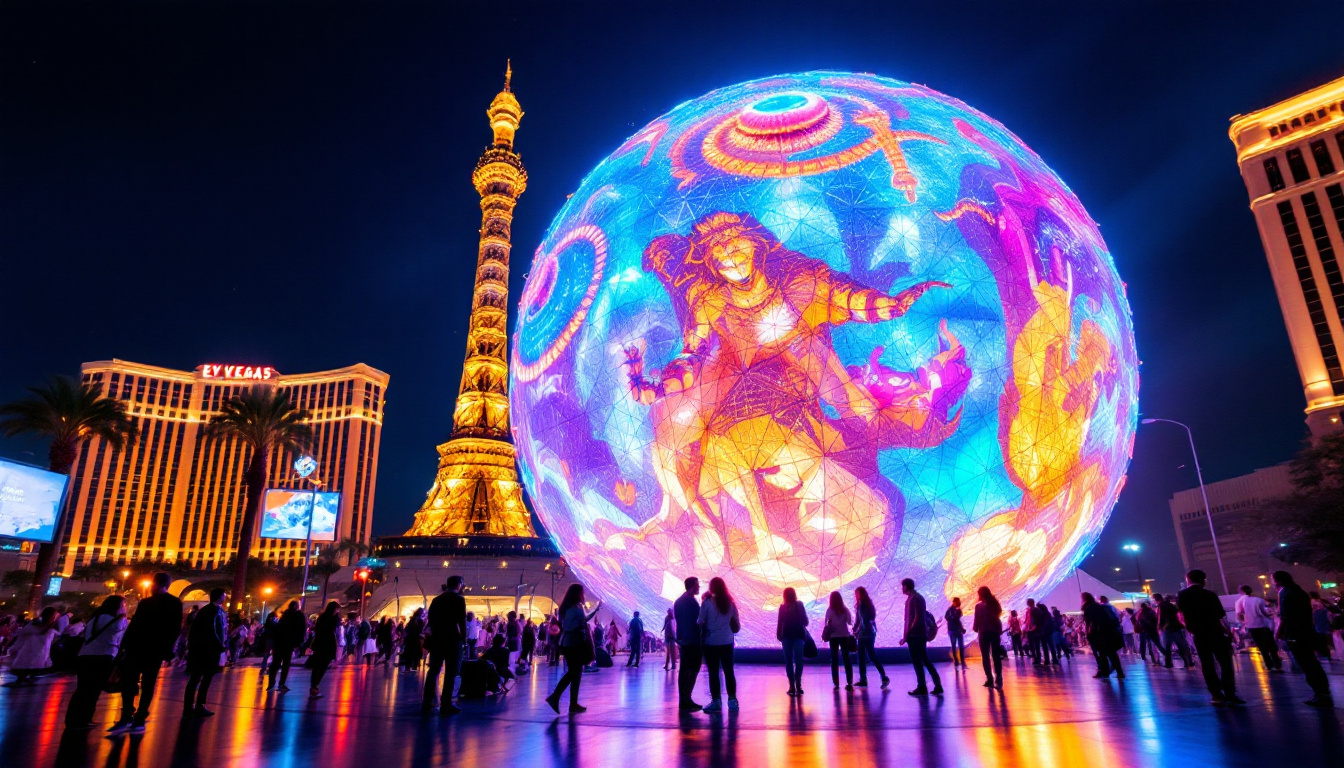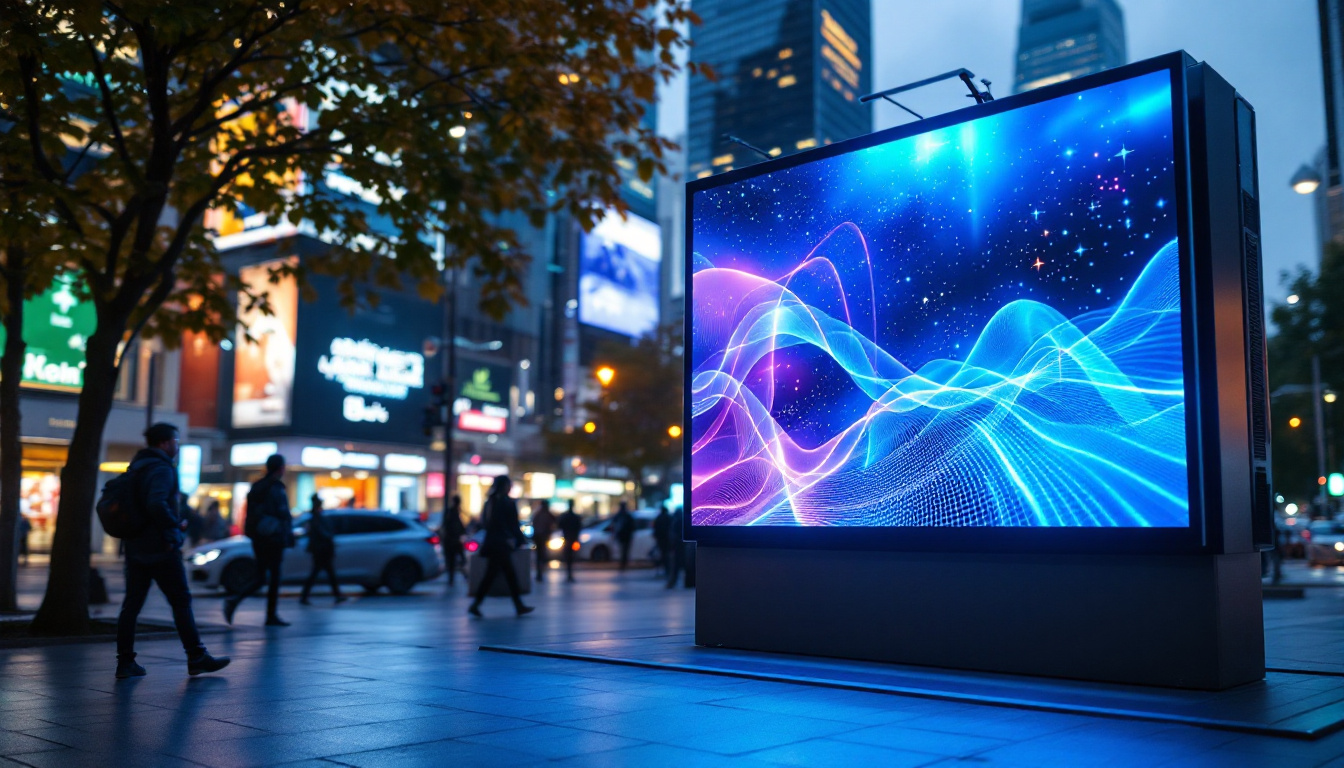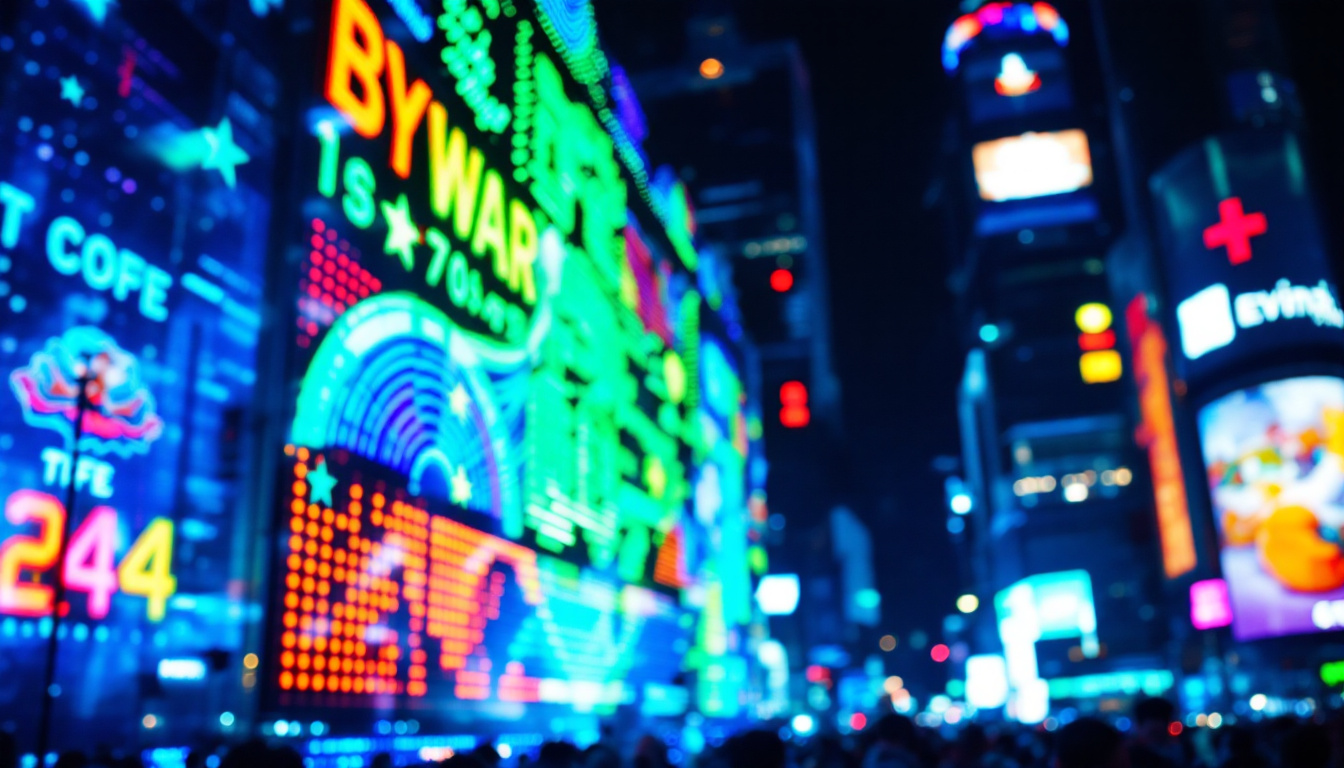In the ever-evolving world of visual technology, LED displays have emerged as a cornerstone of modern communication and entertainment. Their versatility, efficiency, and vibrant colors make them a preferred choice for a wide array of applications, from advertising billboards to television screens. This article delves into the intricacies of LED displays, exploring their functionality, types, advantages, and applications.
Understanding LED Technology
Light Emitting Diodes (LEDs) are semiconductor devices that emit light when an electric current passes through them. This technology has revolutionized how we perceive and interact with visual media. Unlike traditional incandescent bulbs, LEDs are more energy-efficient, have a longer lifespan, and offer superior brightness and color quality. The shift towards LED technology has not only transformed household lighting but has also made significant impacts in various industries, from automotive to healthcare, where precise lighting is crucial for safety and functionality.
How LEDs Work
The fundamental principle behind LED technology lies in electroluminescence. When electrons move through a semiconductor material, they release energy in the form of photons, which we perceive as light. The color of the light emitted depends on the materials used in the semiconductor. For instance, different combinations of gallium, arsenic, and phosphorous can produce various colors, from red to blue and beyond. This versatility allows for a wide range of applications, including indicators, displays, and even sophisticated lighting systems that can change colors dynamically, enhancing the ambiance of any environment.
Types of LED Displays
LED displays come in various forms, each tailored for specific uses. The most common types include:
- Direct View LED Displays: These displays consist of individual LEDs arranged in a grid, allowing for high-resolution images and videos. They are often used in large outdoor screens and digital billboards. Their ability to deliver vibrant visuals even in bright sunlight makes them a preferred choice for advertising and public announcements.
- LED-backlit LCD Displays: In this configuration, LEDs are used as a backlight for LCD screens. This method enhances brightness and contrast, making it popular in televisions and computer monitors. The integration of LED backlighting has allowed manufacturers to create thinner and lighter screens without compromising on picture quality.
- Organic LED (OLED) Displays: OLED technology utilizes organic compounds to produce light. These displays are known for their exceptional color accuracy and contrast ratios, making them ideal for high-end televisions and smartphones. Additionally, OLEDs offer the advantage of flexibility, enabling innovative designs such as curved screens and foldable devices.
As the technology continues to evolve, we are witnessing the emergence of MicroLED displays, which promise even greater efficiency and resolution. MicroLEDs consist of tiny, microscopic LEDs that can be individually controlled, allowing for stunning image quality with perfect blacks and vibrant colors. This advancement could potentially redefine the standards for visual displays, paving the way for immersive experiences in virtual reality and augmented reality applications.
Moreover, the environmental impact of LED technology cannot be overlooked. With their lower energy consumption, LEDs contribute to reduced greenhouse gas emissions compared to traditional lighting options. As more consumers and businesses adopt LED solutions, the cumulative effect on energy savings and sustainability becomes significant. This shift not only benefits the planet but also translates into lower electricity bills for users, making LEDs a smart choice for both economic and ecological reasons.
Advantages of LED Displays
LED displays offer numerous benefits that contribute to their widespread adoption across various industries. Understanding these advantages can help businesses and consumers make informed decisions regarding their visual technology needs.
Energy Efficiency
One of the standout features of LED displays is their energy efficiency. Compared to traditional display technologies, LEDs consume significantly less power, which translates to lower electricity bills and a reduced carbon footprint. This efficiency is particularly beneficial for large installations, such as outdoor billboards, where continuous operation is necessary. Furthermore, the reduced energy consumption not only benefits the environment but also allows businesses to allocate savings towards other operational needs, enhancing overall profitability.
Longevity and Durability
LED displays are built to last. With an average lifespan of 50,000 to 100,000 hours, they outlast many other display technologies. This durability is further enhanced by their resistance to shock and vibration, making them suitable for both indoor and outdoor environments. Businesses can save on maintenance and replacement costs, making LEDs a wise investment. Additionally, the robust construction of LED displays means they can withstand extreme weather conditions, making them ideal for outdoor advertising and public information displays that require reliability in various climates.
Vibrant Colors and High Contrast
LED displays are renowned for their ability to produce bright, vivid colors and deep contrasts. This capability allows for stunning visuals that can capture attention and convey messages effectively. Whether used in advertising, entertainment, or information dissemination, the clarity and vibrancy of LED displays enhance viewer engagement. Moreover, advancements in LED technology have led to improved color accuracy and a wider color gamut, enabling businesses to showcase their products in the best possible light. As a result, brands can create more immersive experiences for their audiences, fostering a stronger emotional connection through visually compelling content.
Versatility and Customization
Another significant advantage of LED displays is their versatility in application. They can be customized in size, shape, and resolution to meet the specific needs of various environments, from retail spaces to concert venues. This adaptability allows businesses to create unique visual experiences tailored to their audience. For instance, modular LED panels can be assembled to form large video walls or intricate designs, providing limitless possibilities for creative installations. Additionally, the ability to control brightness and color settings makes LED displays suitable for different lighting conditions, ensuring optimal visibility and impact at all times.
Interactive Capabilities
In the age of digital engagement, LED displays can also incorporate interactive features that enhance user experience. Touch-sensitive technology and integration with mobile devices allow viewers to interact with content in real time, making presentations, advertisements, and information displays more engaging. This interactivity not only captures attention but also encourages participation, leading to a more memorable experience. As businesses look to innovate and connect with their audiences, the inclusion of interactive LED displays can serve as a powerful tool for enhancing communication and driving customer engagement.
Applications of LED Displays
The versatility of LED technology has led to its adoption in a wide range of applications. From retail environments to large-scale events, LED displays have proven their value across various sectors.
Advertising and Marketing
In the realm of advertising, LED displays have become a powerful tool for brands looking to capture consumer attention. Digital billboards and signage can display dynamic content, including videos, animations, and real-time information. This flexibility allows businesses to tailor their messages to specific audiences and times, maximizing impact.
Entertainment and Events
LED displays play a crucial role in the entertainment industry, particularly in concerts, festivals, and sporting events. Large-scale LED screens provide audiences with immersive experiences, showcasing live performances and broadcasts in stunning detail. The ability to create captivating visuals enhances the overall atmosphere, making events more memorable.
Public Information Systems
LED displays are also widely used in public information systems, such as transportation hubs and municipal buildings. digital signage can provide real-time updates on schedules, directions, and important announcements. This functionality improves communication with the public and enhances overall efficiency in managing crowds and information flow.
Challenges and Considerations
While LED displays offer numerous advantages, there are challenges and considerations that potential users should be aware of. Understanding these factors can help in making informed decisions regarding the implementation of LED technology.
Initial Costs
The initial investment for LED displays can be significant, particularly for large-scale installations. While the long-term savings on energy and maintenance costs can offset this expense, businesses must weigh the upfront costs against their budgets and expected return on investment.
Brightness and Viewing Angles
Another consideration is brightness and viewing angles. While LED displays are known for their brightness, outdoor installations may require higher lumens to compete with sunlight. Additionally, certain types of LED displays may have limited viewing angles, which can affect visibility from different positions. It is crucial to choose the right type of display based on the intended environment and audience.
Environmental Impact
Although LED technology is generally more environmentally friendly than traditional lighting, it is not without its environmental concerns. The production and disposal of LEDs can have ecological implications, particularly concerning the materials used in their construction. Responsible sourcing and recycling practices are essential to mitigate these impacts.
The Future of LED Displays
The future of LED displays looks promising, with ongoing advancements in technology and applications. As industries continue to explore innovative ways to utilize LED technology, several trends are emerging.
Smart Displays
With the rise of the Internet of Things (IoT), smart LED displays are becoming increasingly prevalent. These displays can connect to the internet, allowing for real-time content updates, remote management, and integration with other smart devices. This connectivity enhances the functionality of LED displays, making them more versatile and user-friendly.
Flexible and Transparent Displays
Innovations in LED technology have led to the development of flexible and transparent displays. These displays can be integrated into various surfaces, such as windows and walls, creating new opportunities for advertising and design. The ability to blend technology with architecture opens up exciting possibilities for businesses and consumers alike.
Enhanced Resolution and Color Accuracy
As demand for high-quality visuals continues to grow, manufacturers are focusing on enhancing resolution and color accuracy in LED displays. Advances in pixel density and color calibration techniques are enabling the creation of displays that deliver stunning visuals, making them suitable for applications that require precise color representation, such as medical imaging and graphic design.
Conclusion
LED displays have transformed the landscape of visual technology, offering a myriad of advantages that cater to various applications. Their energy efficiency, durability, and vibrant color capabilities make them an ideal choice for businesses and consumers alike. While challenges exist, the ongoing advancements in LED technology promise a bright future for this dynamic field.
As industries continue to embrace LED displays, understanding their functionality, advantages, and potential challenges will be crucial for making informed decisions. Whether for advertising, entertainment, or public information, LED displays are poised to remain at the forefront of visual communication for years to come.
Explore Cutting-Edge LED Display Solutions with LumenMatrix
As you consider the vast potential and benefits of LED displays for your business or personal needs, LumenMatrix stands ready to guide you through the next generation of visual technology. With a commitment to innovation and quality, LumenMatrix offers an extensive range of LED display solutions, from Indoor and Outdoor LED Wall Displays to specialized options like Vehicle, Sports, and Floor LED Displays. Our mission is to transform your communication strategy with Custom, All-in-One, and Transparent LED Displays that not only captivate your audience but also convey your message with unparalleled impact. Check out LumenMatrix LED Display Solutions today and experience the future of visual engagement.

